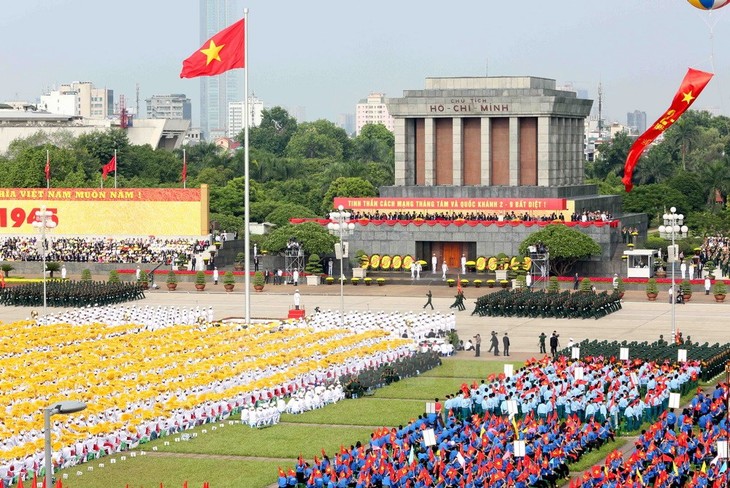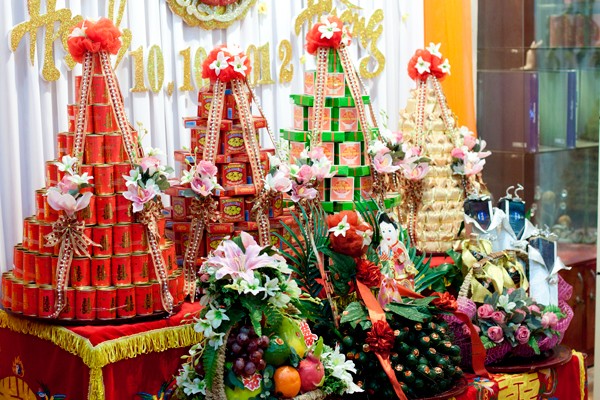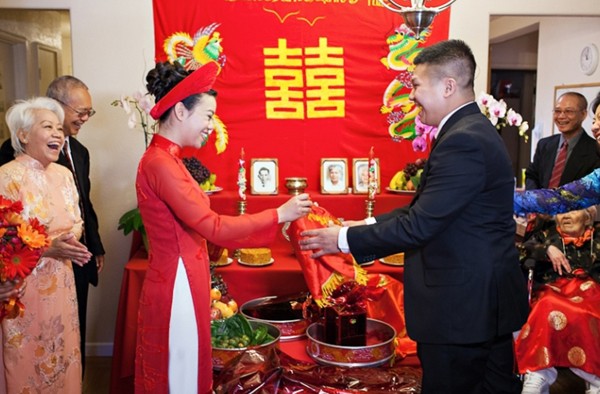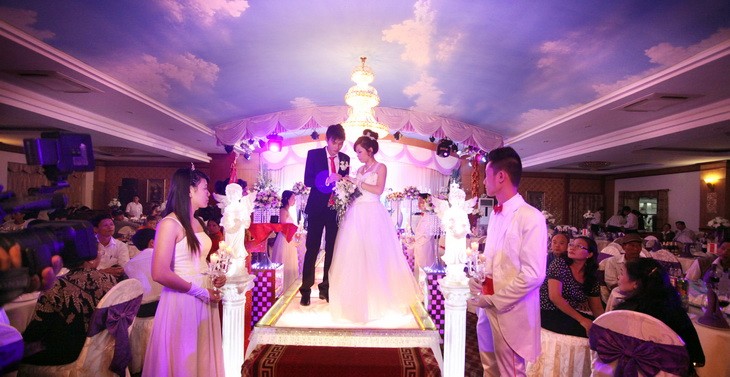(VOVworld) - We’d like to thank you, our listeners, for your congratulations on VOV’s 70
th anniversary last week. Your sentiments were an enormous reward for us on this special day. It inspires us to produce more interesting programs for you.
B: Rasheed Naz of Pakistan posted a comment on our website on the 70th anniversary of Vietnam’s National Day on September 2 and the 70th anniversary of the Voice of Vietnam on September 7. “Congratulations on this day. Congratulations to all winners of the contest “What do you know about Vietnam?” I also congratulate Pakistani listener Amir Jamil for his Special prize. I listened to your program today which was full of news related to National Day such as a military parade and other celebrations. More than 30,000 people participated in the parade. Best wishes and congrats to Vietnam from around the world. I have been a regular listener to VOV for several years. I believe VOV will continue to provide its listeners with an objective detailed picture of Vietnam and the world. Keep up the good work.”
 |
The Hoan Kiem lake is beautifully decorated on National Day (photo: Zing)
|
A: Thank you very much Rasheed for your nice words. From India, Jayanta Chakrabarty sent his best wishes and felicitations for VOV's 70th anniversary. He wrote: “I hope VOV will continue to enlighten, educate, and entertain its worldwide listeners in the coming years just as it has been doing in the past. As a regular listener to your English service I would like to thank you for the wonderful programs being broadcast. I usually listen to VOV both on shortwave and via live streaming on the internet.”
B: Thank you, Jayanta, for your compliment. Jayanta also commented on last Sunday’s program: “I enjoyed listening to the news and the Sunday Show about the traditional culture and scenic beauty of Vietnam. The report on the kite making tradition of a thousand years in the village of Ba Duong Noi was interesting and very informative. Kite flying is also popular in India and there are many towns which are associated with this sport and cottage industry of kite making. Ba Duong Noi seems to have a special attraction. The program reflects one of the unique cultural traditions of this interesting country of Vietnam.”
 |
Parade at the Ba Dinh square
|
A: Rabi Sankar Bosu, another listener from West Bengal, India, extended his warmest greetings to all VOV staff. He said he likes the listeners’ feedback program “Letter Box”, which is something like a trip around the world through the words of listeners. He shared his views on a special report about VOV broadcasters’ contributions to Vietnam’s two resistance wars against foreign invaders. “Your special report helped me understand how VOV broadcasters contributed to the success of Vietnam’s resistance wars braving the enemy raids and bombardment. I’d like to praise journalist Tran Dac Loc, who faced numerous hardships of war, and journalist Huy Lam, who followed the Vietnamese soldiers to every battlefield to report the latest developments of revolutionary movements in southern Vietnam to the public.”
B: Many thanks, Rabi Sankar Bosu, for sharing your feelings toward VOV’s war journalists, who bravely worked through the terrible hardships of the wars. We’re proud that VOV’s development has been worthy of Vietnam’s history. Richard Nowak of the US wrote in his email: “Tonight’s 70th anniversary broadcast was perfect. The history of VOV was awesome, including the Declaration of Independence proclaimed over VOV. This was exactly what I was hoping to hear. Sounds like a huge celebration was held in Hanoi with top officials to commemorate Vietnam’s National Day and VOV’s anniversary. Thanks for including the reasons why people listen to radio. Thanks for including regular VOV listeners like me. The 70th anniversary was perfect. I recorded the show on cassette tape here in Florida.”

A performance at VOV's 70th anniversary |
A: We have many more congratulatory messages from listeners, but due to time constraints, we can’t read them all on air. We’d like to extend our sincere thanks to Peter Ng of Malaysia, Reiner Peuthert of Germany, Yoshikazu Suzuki, Masaru Sekimoto, and Toshiya Nishimura of Japan, and Parisi Asih of Pakistan, Mark Ulysses Garcia of Mexico, Hazairin Junep of Indonesia, and Ben Wier of Australia. Now let’s take a short break with a beautiful, old song Tombe La Neige, Snow is falling, the Vietnamese version, at the request of Hazairin Junep of Indonesia. It fits the charmingly melancholic autumn atmosphere in Hanoi right now. But let’s change the mood to joyful and happy and talk about Vietnamese wedding ceremonies – a topic many of our listeners have asked about.
B: The traditional Vietnamese wedding is one of the most important ceremonies in Vietnamese culture with influences from Confucianism and Buddhism. It is a significant day, obviously, for the couple and their families. Depending on the customs of their specific ethnic group, the ceremony may include a number of different elements, but in general, there are two main ceremonies: the betrothal ceremony and the wedding ceremony.
 |
Betrothal gifts the groom's family gives the bride's family
|
A: After both families agree to the marriage, they go to a fortuneteller to find out what dates and times are best for the two ceremonies. All rituals must be carried out on schedule because the chosen lucky dates and times are believed to affect the couple’s future. Some days before the wedding, the groom’s family visits the bride and her family with a red lacquered box containing a betrothal gift of areca nuts, betel leaves, tea, cakes, fruits, wines, and other delicacies.
B: Senior people of both sides introduce their families, the groom, and the bride, and prepare for the wedding ceremony. On the wedding day, the groom's family and relatives go to the bride's house bringing many gifts wrapped in red paper. These gifts are similar to those of the engagement ceremony but in larger quantities because the bride’s family will give them as gifts to the wedding guests. The persons bearing the trays of gifts are carefully chosen. Usually they are happily married couples and unmarried girls or boys.

Traditional wedding ritual at home
|
A: Women in the ceremony all dress in Ao Dai and men dress in western suits or the traditional men’s Ao Dai. The delegation is usually led by the couple that is wealthiest and most successful in the family to bring the couple luck and success in their future life together. The groom's family stops in front of the bride's house and waits for the lead couple to enter the house first with a tray of wine. They invite the bride's parents to take a sip. By accepting the toast, the bride's family agrees to allow the groom’s family to enter their house.
B: The groom's family asks the bride’s family to allow their son to marry their daughter. Having received permission, the groom goes to the back room to bring the bride out. She wears a traditional red or pink wedding Ao dai. The couple prays at the ancestral altar for the ancestors to bless their marriage and then express their gratitude to both parents for raising and protecting them.

A wedding party at a restaurant
|
A: After the wedding ritual, there is a party for all the relatives and friends at one of the houses, if it’s large enough, or at a restaurant. The bride often changes into a white western-style gown for the party. The couple performs a cake-cutting ritual and drink toasts with all the guests as the party begins.
B: These are the basic elements of a wedding in Vietnam. Sometimes there will be other requirements or taboos involving the quantity and types of offerings, guests, the age of the representatives for both families, etc. The autumn and the spring, which runs from now until March, are the favorite seasons for weddings in Vietnam. We will have more stories on this topic in later programs. Goodbye. See you next time.